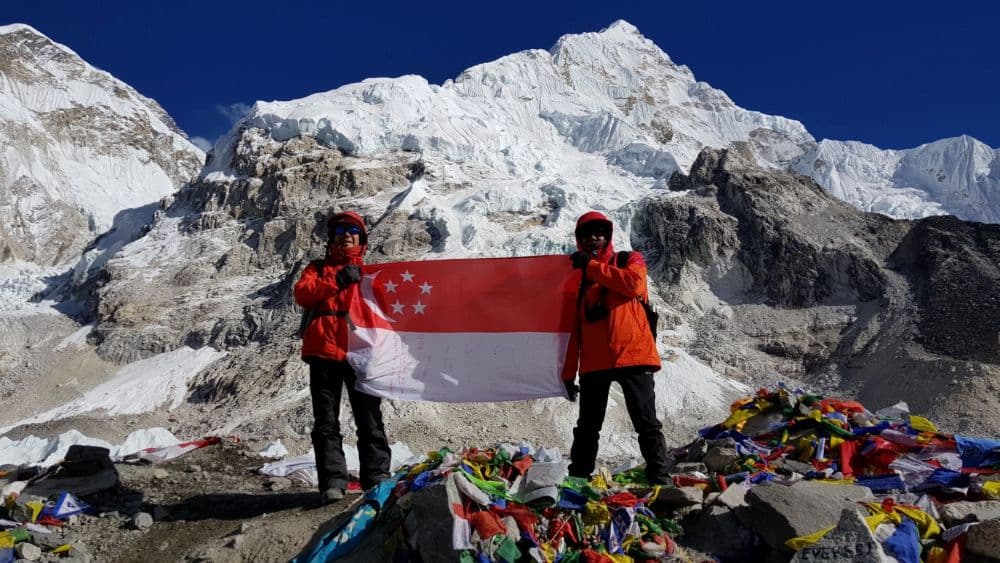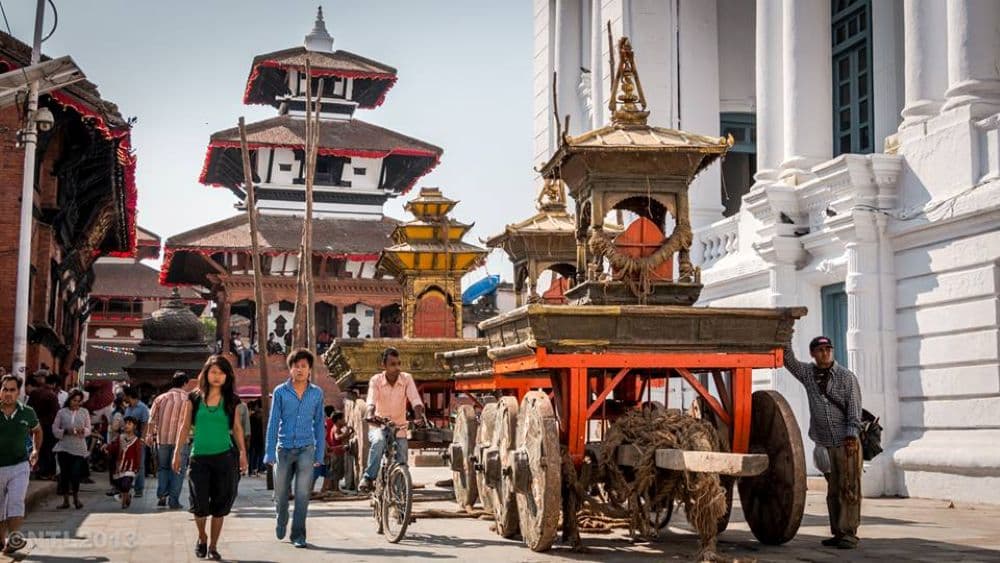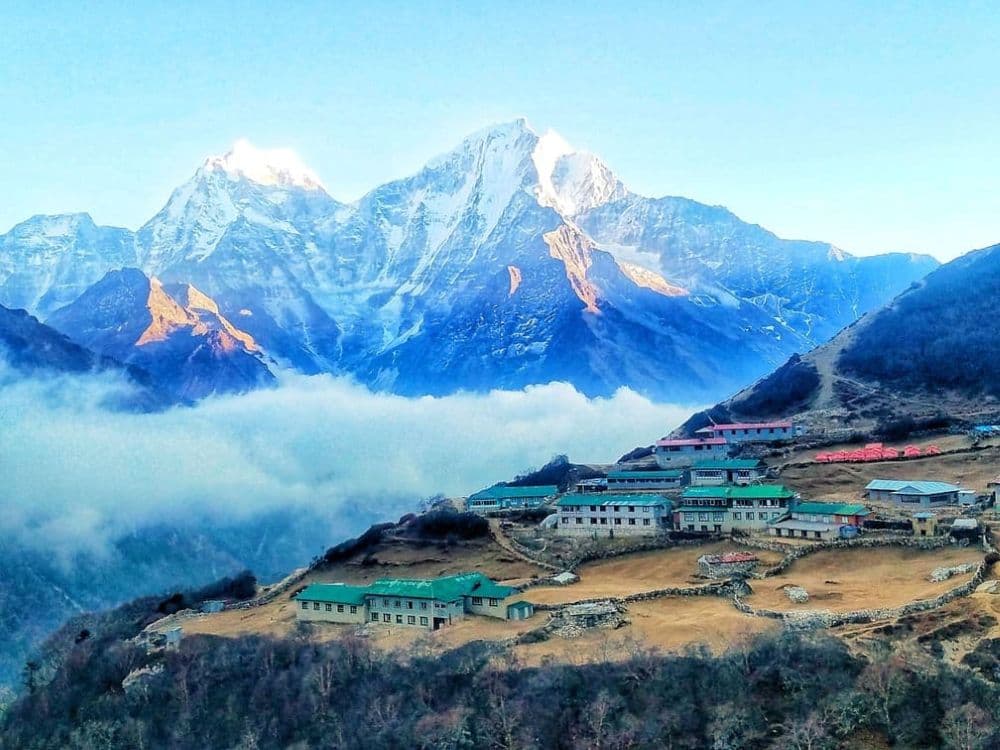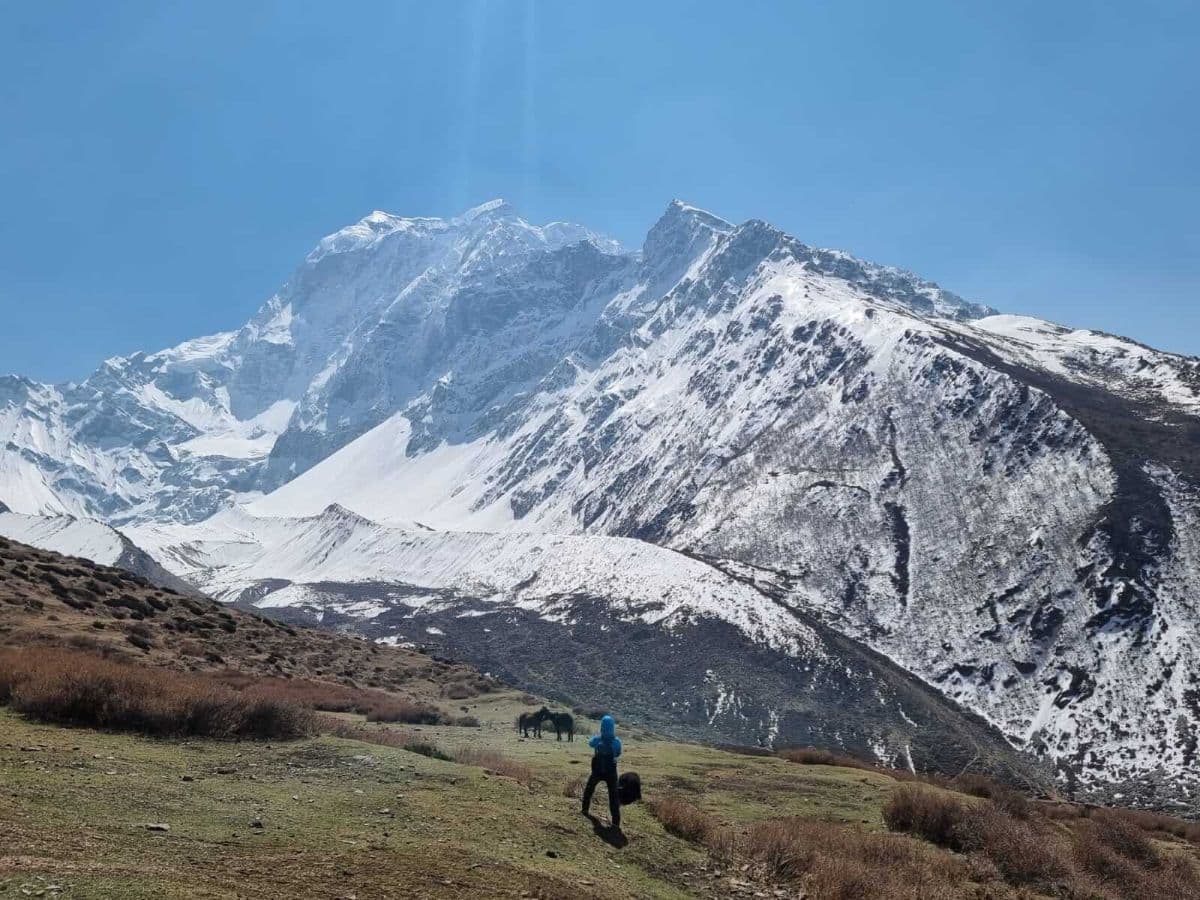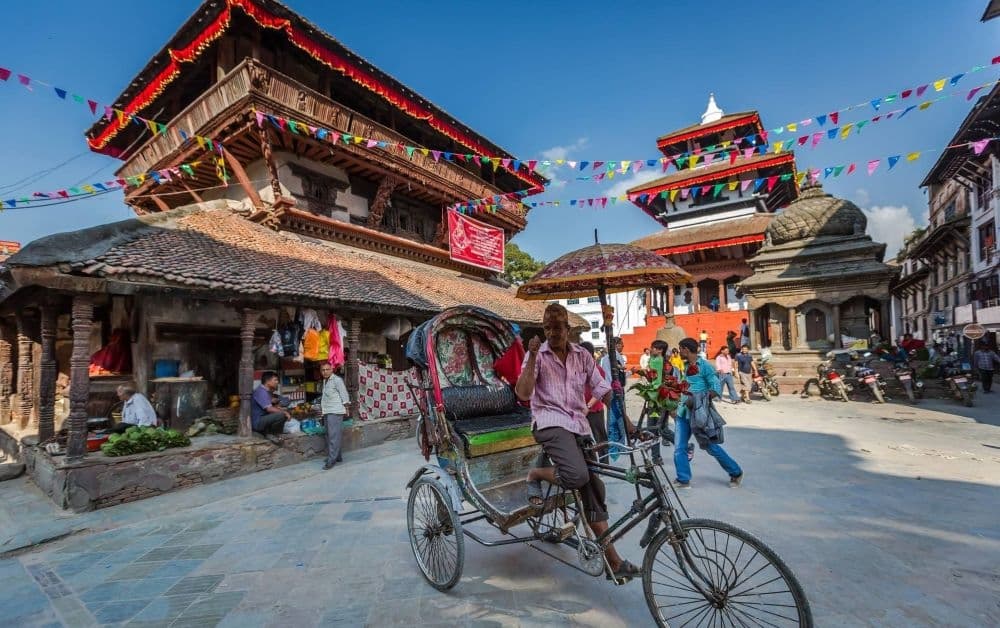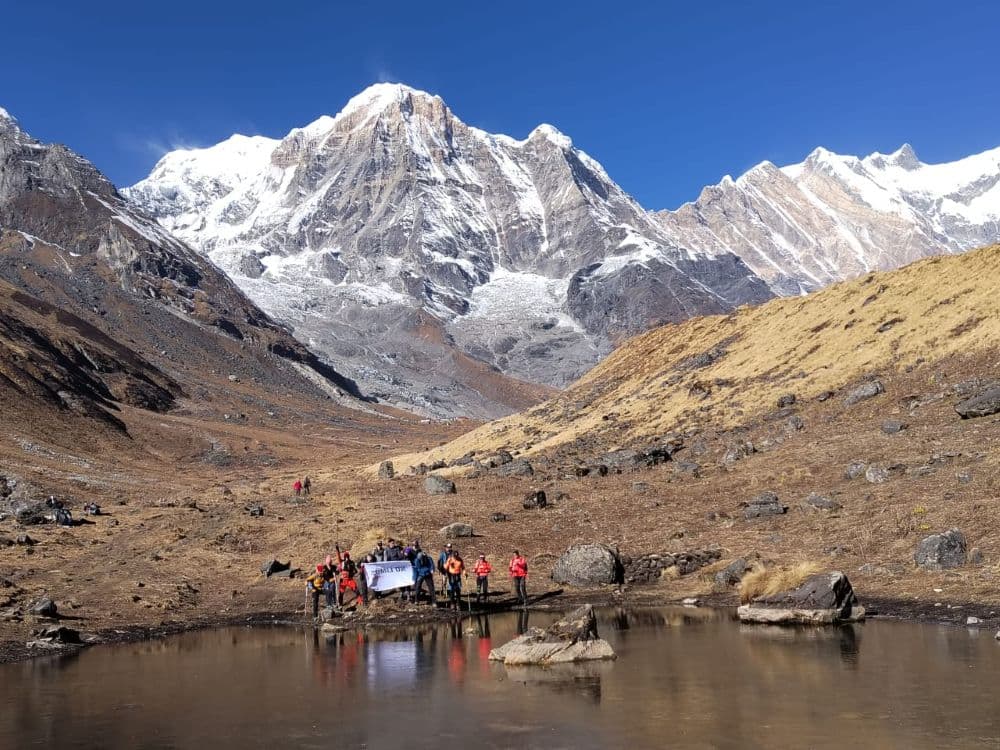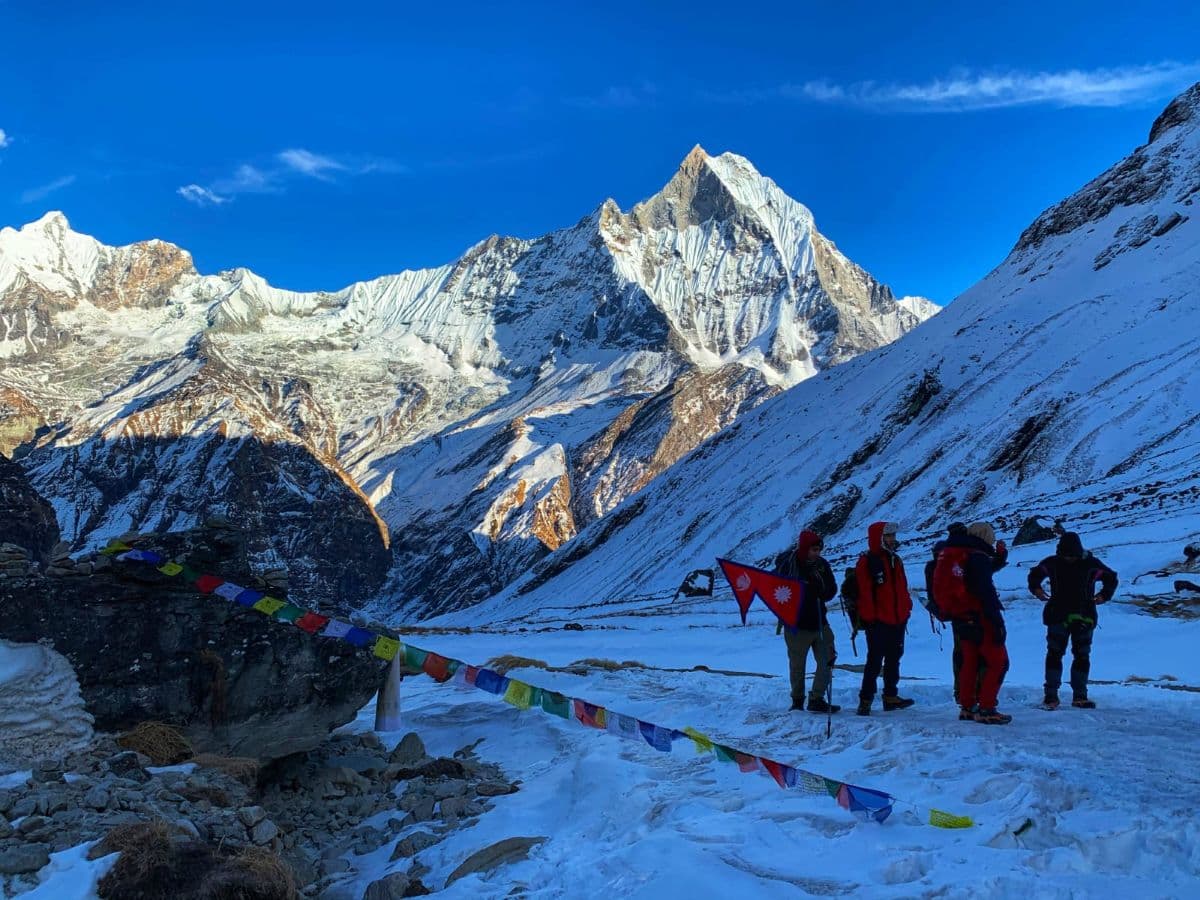
Complete Guide To Annapurna Base Camp Trekking 2025/26
This guide to Annapurna Base Camp Trek can be a great help if you are thinking of embarking on the Annapurna Base Camp Trek in 2025/2026. This trek takes you to the foot of Annapurna I, following the path that goes deep into the Annapurna Sanctuary.
Whether you are first-time trekkers or seasoned trekkers, this guide to ABC is everything you need. We will answer all your curiosities, including difficulty level, itinerary, routes, accommodations, etc. So, are you ready to plan your Annapurna region trekking?
What is Annapurna Base Camp Trek?
Annapurna Base Camp Trek is one of the popular treks in Nepal. This trek offers you a close-up view of the tenth-highest mountain in the world, along with expansive views of the surrounding peaks. Just with a moderate level of trekking, you will reach an incredible height of 4,130 m at base camp, isn’t that incredible?
Moreover, this trek is a perfect blend where adventure means serenity. You will be traversing the forested trail, beautiful waterfalls, and passing the charming villages. These villages offer you insights into the local way of life and unique culture. Tracing the path beneath Annapurna I, this journey is undoubtedly a surreal experience.
Annapurna Base Camp Trek 2025 Overview
Your journey for ABC will start off as you take a scenic drive from Kathmandu to Pokhara. Leaving the city of lakes, Pokhara, you will drive to Nayapul, from where you will actually hit the trail. You will trek through the terraced fields and charming villages to reach Tikhedunga. Now, you will walk through the stone staircases and rhododendron forest to reach Ghorepani.
From Ghorepani, you will hike to the vantage point of Poon Hill. The early morning sunrise over the Annapurna range will try to make you stay there for a longer period, but you will now trek towards Tadapani. Now, you will trek to approach the Annapurna Sanctuary from Sinuwa onwards. Walking on the forested trail filled with oak trees, you will pass Deurali. From thereon, the trees change to grasses and meadows, indicating you are above the tree line. The Machhapuchre mountain standing in front of you will keep you mesmerized. Passing the Macchapuchre base camp, you will now approach the Annapuchre base camp.
After soaking in the incredible views at ABC, you will trek back to Chhomrong with the sight of forested trail appearing in front of your eyes. Now, you will enter Ghandruk, where you will come across the beautiful Gurung culture. Walking on the Ghandruk Trek route, you will get back to Nayapul, where you will officially end walking on the trails.
Our Best Annapurna Base Camp Trek Itinerary
Day 1: Arrival in Kathmandu
Day 2: Drive to Pokhara from Kathmandu
Day 3: Drive to Nayapul and trek to TikheDhunga
Day 4: Trek to Ghorepani
Day 5: Hike to Poon Hill and trek to Tadapani
Day 6: Trek to Sinuwa
Day 7: Trek to Deurali
Day 8: Trek to Annapurna Base Camp
Day 9: Trek to Dovan
Day 10: Trek to Chhomrong
Day 11: Trek to Ghandruk
Day 12: Trek to Nayapul and drive to Pokhara
Day 13: Drive to Kathmandu
Day 14: Departure to the Airport
What to Expect on the Annapurna Base Camp Trek
Throughout the trek, you’ll experience some of Nepal’s most stunning landscapes. You’ll pass through forests, rivers, waterfalls, and, of course, snow-covered peaks. The trek usually takes 11 days, with several routes to choose from. Each day, you’ll enjoy new views, as well as a chance to experience Nepalese culture.
Different Routes For Trekking to Annapurna Base Camp
There are many routes that you can trek to ABC according to your preference, fitness level, and time availability.
Short ABC Trek
Samrung→Sinuwa→Deurali→ABC→Sinuwa→Samrung
ABC with Ghorepani and Ghandruk
Nayapul→Nayapul → Tikhedhunga → Ghorepani → Poon Hill → Tadapani → Sinuwa Deurali→ABC→Chhomrong→Ghandruk→Nayapul
Annapurna Base Camp Trek with Annapurna Circuit Trek
Besisahar → Chame → Pisang → Manang → Yak Kharka → Thorong Phedi → Thorong La Pass → Muktinath → Jomsom → Tatopani → Ghorepani → Poon Hill → Tadapani → Chhomrong → Bamboo → Dovan → Deurali → Machapuchare Base Camp → Annapurna Base Camp → Bamboo → Jhinu Danda → Nayapul
How Difficult Is Annapurna Base Camp Trek for Beginners?
The Annapurna Base Camp trek is moderately difficult. You will walk on the trails from Nayapul(1010 m) and reach the maximum elevation of 4,130 m at base camp. Hence, altitude sickness can be quite a concern on this journey.
Moreover, you will be walking for 6 to 8 hours for more than a week in the diverse terrain of the Annapurna region. Consistent walking on the forested trail while taking steep uphill and downhill can be daunting even for seasoned trekkers. Furthermore, if you are going on a trek to ABC during the monsoon, you will have to face heavy rainfall accompanied by a wet and slippery trail.
Who Can Do the Annapurna Base Camp Trek?
As mentioned above, you will have to walk several hours on the forested trail, stone staircase, and take many steep ascents and descents while constantly gaining elevation. Hence, if you are someone with a good level of physical fitness and mental endurance, then you are good to go.
Likewise, trekking to ABC is doable even for novice trekkers with no prior experience in trekking. However, beforehand, preparation plays a big role in successfully completing this trek. The well-marked trail and accessibility of the teahouses alongside the rails make this journey one of the best treks for beginners.
If you are someone who has joint issues and cannot walk for long hours, we recommend that you not embark on this trek. Likewise, trekkers with respiratory or heart issues should first consult with their doctor and then only plan their trek. Remember that nothing is more important than your health.
How To Cope With Altitude Sickness While Annapurna Base Camp Trekking?
Since you already know by now that high altitude sickness can be a major concern for all trekkers, it is necessary to take steps to avoid altitude sickness. When you cannot properly acclimatize to the lower oxygen level of a higher altitude, you can face mild symptoms of AMS to extreme symptoms of HAPE and HACE. Hence, altitude acclimatization acts as the key to solving altitude sickness issues. Moreover, these steps can be really helpful to foster proper acclimatization.
- You can choose the Annapurna Base Camp trekking package that includes acclimatization days.
- On the trail, you should ascend slowly and stay hydrated. It is totally okay to walk at your own pace.
- Make sure to eat energy-giving food and rest well.
- You can avoid the consumption of hard drinks and excessive drinking of tea and coffee, as it can slow down your acclimatization process.
How To Prepare For Trekking To Annapurna Base Camp?
Annapurna Base Camp trekking preparation starts weeks before you actually hit the trail. You should first assess your physical fitness and mental strength. After knowing where you stand, you can tailor the training accordingly. You can add physical exercise that will increase your physical strength, leg, and core energy while boosting your overall stamina. Likewise, cardio such as brisk walking, swimming, cycling, etc, also helps to increase your endurance.
Preparing yourself mentally also significantly impacts your mindset during the trek. When you read blogs and watch videos about the terrain, accommodations, meals, highlights, etc, it will give you a general idea of how your trek is going to be. This will help you develop the mindset of adaptability and set realistic expectations.
Another preparation for trekking that you should make is your packing list for the trek. Regarding the trekking gear for Annapurna Base Camp and other packing stuff, you can easily rent or buy it here in Kathmandu. There is no need to bring all the stuff from your home country. However, make sure to pack your passport, travel insurance, visa documents, and other stuff that you cannot buy or rent in Nepal.
What To Pack For Annapurna Base Camp Trekking?
If you are confused about what to pack for the first trek, then we recommend that you pack light by not missing out on any essentials. The list below can be a small reference on what to pack.
Clothing
- Moisture-wicking t-shirts
- Thermal underwear
- Fleece or down jacket
- Convertible Trekking pants
- Waterproof pants
- Warm hat/beanie
- Sun hat or cap
- Gloves
- Buff or neck gaiter
- Footwear
- Sturdy trekking boots
- Lightweight shoes or sandals
- Warm socks
Gear
- Daypack
- Backpack
- Sleeping bag
- Trekking poles
- Reusable water bottles
- First aid box
Toiletries and Personal Hygiene
- Biodegradable soap
- Toothbrush and toothpaste
- Wet wipes and toilet paper
- High SPF sunscreen and lip balm with UV protection
- Headlamp with extra batteries
- Camera
Miscellaneous
- Snacks
- Journal
- Pen
Trekking Permits Required in the Annapurna Base Camp Trail
Most of the ABC trail lies inside the Annapurna Conservation Area. So, you will need to obtain the Annapurna Conservation Area Permit (ACAP). This trekking permit will cost you around $15 per person if you are a SAARC national. Trekkers other than SAARC nationals have to pay around $30 per person. However, children under 10 have the privilege of entry without a permit. To get ACAP, you can either visit the Nepal Tourism Board in Pokhara or Kathmandu.
Similarly, the next permit that is essential for completing the ABC trek is the Trekkers’ Information Management System(TIMS) card. More than entry access, this card ensures safe trekking in Nepal. This document has details, contacts, etc, so that it will be easy for trekkers to contact and officials to find trekkers in case of accidents or natural disasters.
When to Go Trekking in the Annapurna Region
Most of the treks in the Annapurna region, such as Annapurna Circuit Trek, Khopra Ridge Trek, etc, are most favorable during the spring and autumn seasons. And trekking to Annapurna Base Camp is no different. These peak seasons allow you to make the most out of your journey.
The spring (March to May) season decorates the Annapurna region with floral blooms. The different shades of rhododendron and wildflowers blooming alongside the forested trail will keep your exhaustion away. Moreover, the clear skies increase the visibility of the panoramic views of the mountains. Mild temperatures during spring will somehow make your long walking hours a little bit comfortable and pleasant.
Similar to spring, autumn(September to November) also shares the same delights of vibrant weather, crisp Himalayan views, and dry trails. Moreover, the festivals like Dashain, Tihar, Indra Jatra, Chaath, etc, coinciding in this season add an extra layer of excitement and exploration in your journey.
What About Accommodation on the Annapurna Base Camp Trek?
Being one of the mainstream trekking routes in Nepal, you can find several teahouses alongside the trekking trails. You cannot expect luxurious services in these teahouses, but they offer you basic to moderate levels of service. Usually, trekkers will be provided with twin-sharing rooms with two or three beds in it. Don’t worry. Beds will be well-equipped with blankets, pillows, and mattresses. However, don’t forget to pack a sleeping bag with you.
Generally, you have to use the shared bathroom that is within the vicinity of the teahouses in high altitude. In lower altitudes, you may find rooms with an attached bathroom. Moreover, you can dine at a communal dining table with other fellow trekkers.
What Kind of Food and Drinks Are Available During Nepal ABC Trekking?
You can eat all 3 meals(Breakfast, lunch, and dinner) in these teahouses dotted alongside the trail. For breakfast, you can expect some mild food options like porridge, bread and jam, sel roti, roti tarkari, paratha, congee, omelets, etc.
The lunch and dinner have similar menus with hearty and fulfilling foods like Daal Bhaat Tarkari, Gundruk Dindo, Pasta, Chowmein, Thukpa, Momo, etc. Whether you are vegetarian or non-vegetarian, food options should not be a problem for you as these teahouses have both veg and non-veg options. For drinks, you can get tea, coffee, soft drinks, and even hard drinks.
Is the Annapurna Base Camp Trek Affordable or not?
When it comes to the Annapurna Base Camp trek cost, it usually depends on the mode you are taking, highlights, itinerary, and services you include in the trek.
Can I Get Wi-Fi Services on the Trail?
Usually, most of the teahouses on the lower elevations have WiFi facilities; however, as you ascend towards higher altitudes, you may not be able to find WiFi. Even if you find one, it can be slow. So, it is recommended to buy a SIM card of NCELL or NTC for data usage.
What About Hot Showers, Electricity, and Charging Electronics?
You can find electricity in the teahouses, but sometimes it can be inconsistent with blackouts. Likewise, hot showers and charging electronics are considered additional amenities apart from accommodations, so you will have to pay an extra amount of $2 to $5 to access these services.
Annapurna Trek Cost With the Travel Agency
When you are embarking on the ABC trek with a licensed travel agency, you will spend anywhere from $600 to $1500. This cost includes all the accommodations and meals during the trek, guides, porters, permits, transportation, etc. We are offering you this grad adventure for USD 1000 per person. Hence, hassle-free and convenient trekking is a big perk of traveling with one of the best trekking agency in Nepal.
However, it may not include the insurance, visa cost, international airfare, tipping, and other personal expenses.
Annapurna Base Camp Trekking by Hiring Guides and Porters
If you do not want to plan your trek with any travel agency, you can hire licensed guides and porters to accompany you throughout the trek. However, in this mode, you will have to take care of all the things on your own. Apart from your own expenses, you will have to take care of accommodations, meals, insurance, and other expenses of your guides and porters. Guides can charge you $25 to $35 per day, while porters can charge you around $15 to $20 per day.
Having guides and porters is a great help in your journey. Usually, the licensed guides are well-known about the route, culture, and tradition of the place. They will provide you with the necessary information while mediating between you and the locals. Porters will help you carry extra luggage and equipment, making your trek easy and convenient. Hence, whatever your reason to trek Annapurna Base Camp , these great companions throughout the journey will definitely make your trek safe and efficient.
Trekking to ABC Independently
When you are trekking independently to ABC, you will have to manage everything on your own. You will get to manage your expenses day by day, choosing cheaper or flexible lodging and meals. Trekking independently can save you money if you work smartly, but it can be pretty expensive if you do not plan things right. Moreover, you will have to go through the hassle of acquiring permits and negotiating the price with teahouse owners and shopkeepers all by yourself.
Annapurna Base Camp Trekking is truly an impeccable journey that you should complete in your life once. With stunning vistas, rich cultural encounters, and personal achievement, this Annapurna trekking experience is sure to be one of your unforgettable memories. Contact us.
